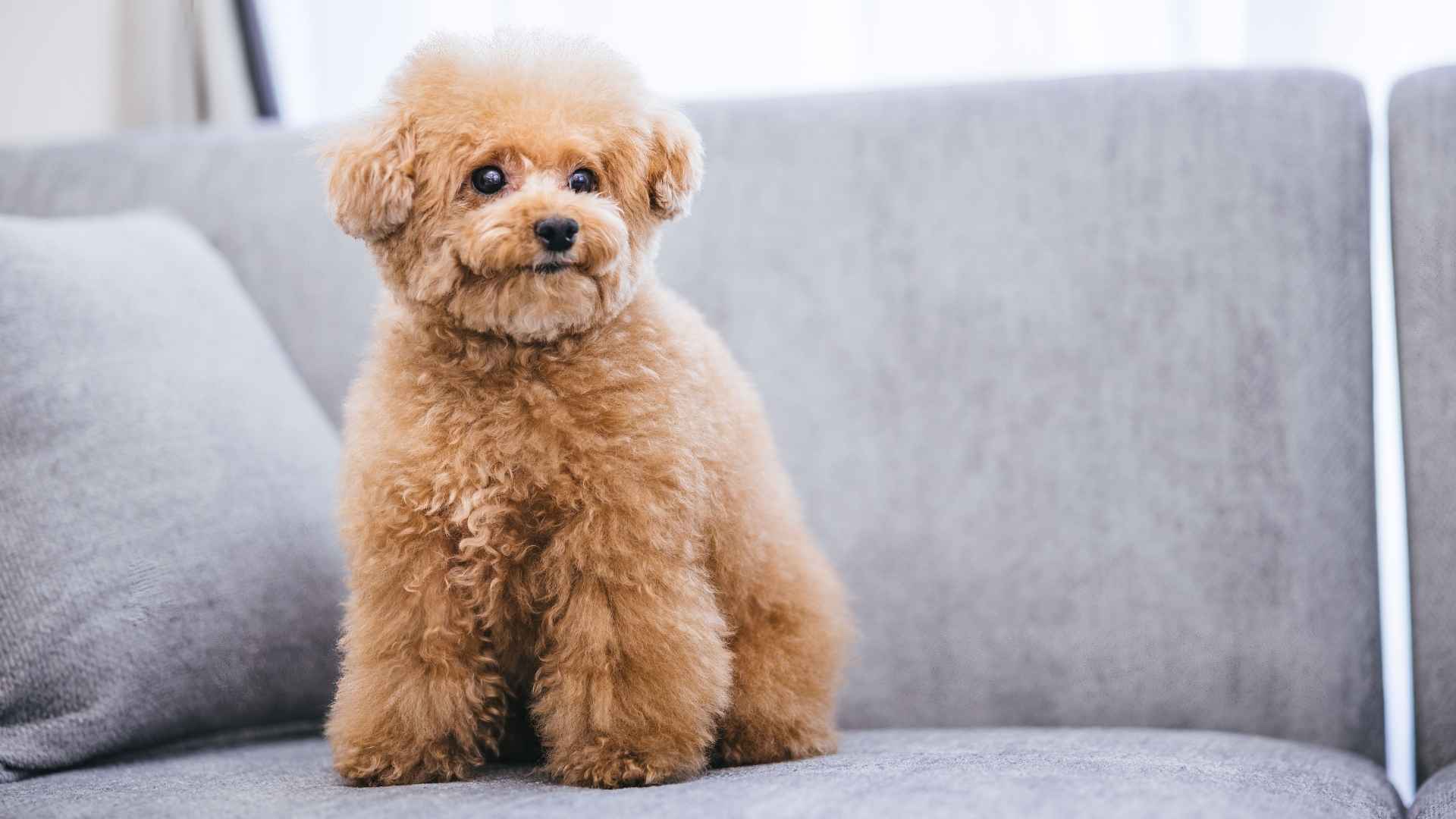Finding the perfect pint-sized pup can be a joy, until allergies get in the way. For those who love dogs but suffer from sneezing, itching, or watery eyes, hypoallergenic teacup breeds might offer a comforting solution. While no dog is entirely allergen-free, certain breeds are known to produce significantly fewer allergens, making them a better match for allergy-sensitive households.
Many of these tiny companions, like the toy poodle, pack all the charm, intelligence, and grace of their full-sized counterparts into a delightfully compact frame. Originally bred centuries ago in Germany for retrieving ducks, poodles have since evolved into beloved pets of royalty, performers, and families alike. Their signature coat, beyond being stylish, is also low-shedding and one of the key traits that makes them hypoallergenic.
Hypoallergenic teacup dogs aren’t just easy on allergies, they’re also full of personality. Despite their size, these breeds often display boundless energy, intelligence, and affection, making them ideal companions for city dwellers and cozy homes alike.
Hypoallergenic Teacup Dog Breeds
1. Poodle
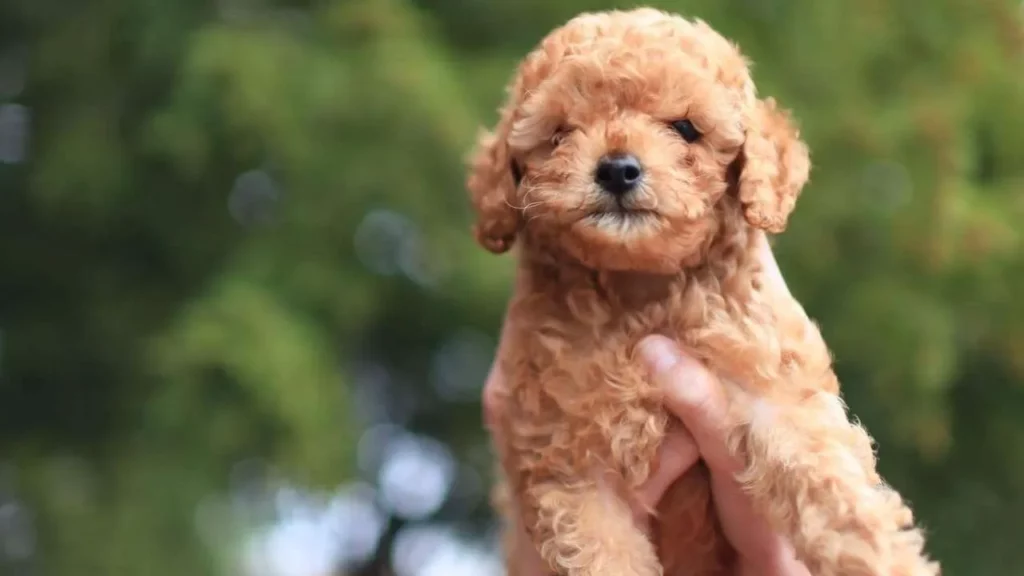
Often linked to French elegance, the Poodle actually traces its roots back to Germany, where it was originally bred as a duck retriever. According to the AKC, the Standard Poodle is known for being active, confident, and highly intelligent. The breed comes in three sizes: Standard, Miniature, and Toy, commonly referred to as Teacup when referring to the tiniest individuals.
Teacup Poodles typically stand under 10 inches tall and weigh between 6 and 9 pounds. Regardless of size, all Poodles share a square build, springy gait, and long, elegant neck paired with dropped ears and a docked, feathered tail.
Grooming
Though Poodles are low-shedding and considered hypoallergenic, their dense, curly coats require regular maintenance. Without consistent brushing, mats and tangles can quickly form. Frequent grooming sessions, at least every few days, and professional trims every 4–6 weeks help keep their coat in prime condition.
Their hair doesn’t trap dander the same way as shedding breeds, making them a suitable choice for some allergy sufferers.
Fun Fact: The Poodle’s name comes from the German word pudelin, meaning “to splash,” highlighting its origins as a water-loving retriever.
2. Maltese
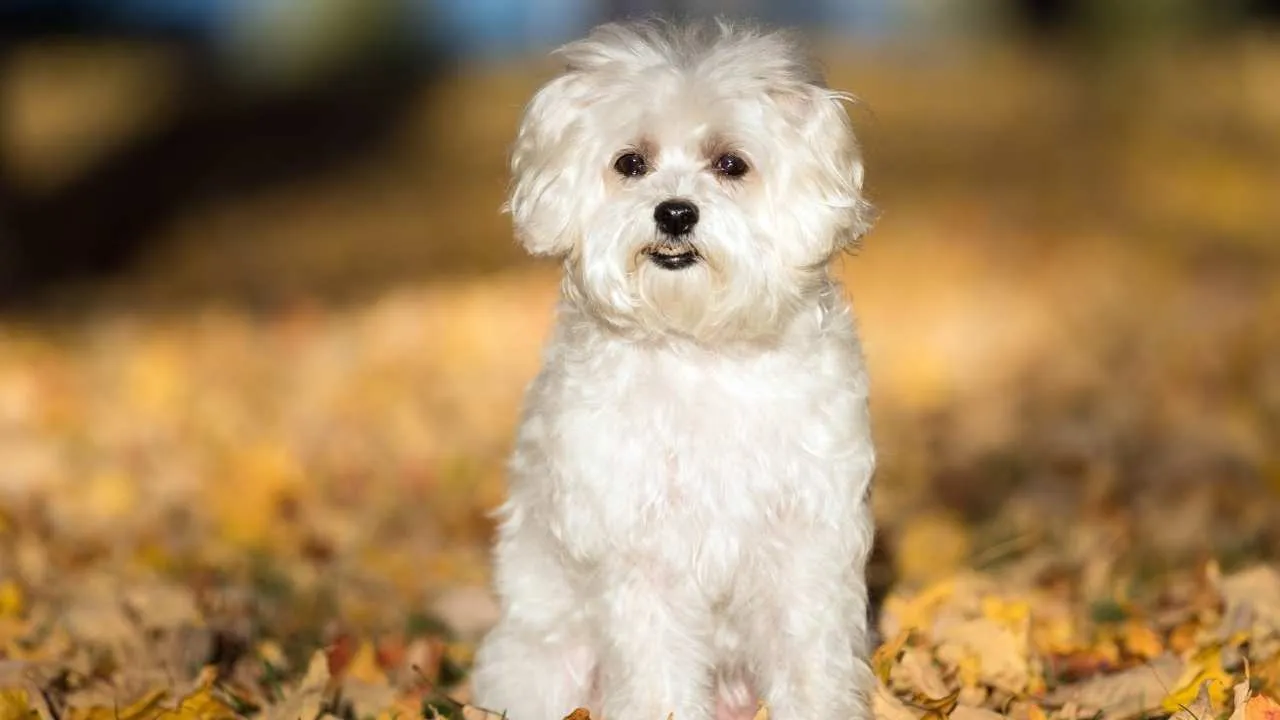
The Maltese, also known as the Maltese Lion Dog or Roman Ladies’ Dog, is a toy breed steeped in ancient history. PetMD reports that the Maltese is a small breed recognized for its elegant, floor-length white coat and lively, playful demeanor.
Originating from the Mediterranean over 2,500 years ago, this elegant pup was once cherished by aristocrats and royals. With its compact body, feathered tail arching gracefully over its back, and a pure white, floor-length coat, the Maltese looks like it walked straight out of a storybook.
Weighing under 7 pounds and standing around 7–9 inches tall, it embodies daintiness without sacrificing spirit. While not officially classified as a “teacup” breed, its naturally petite size keeps it in the spotlight.
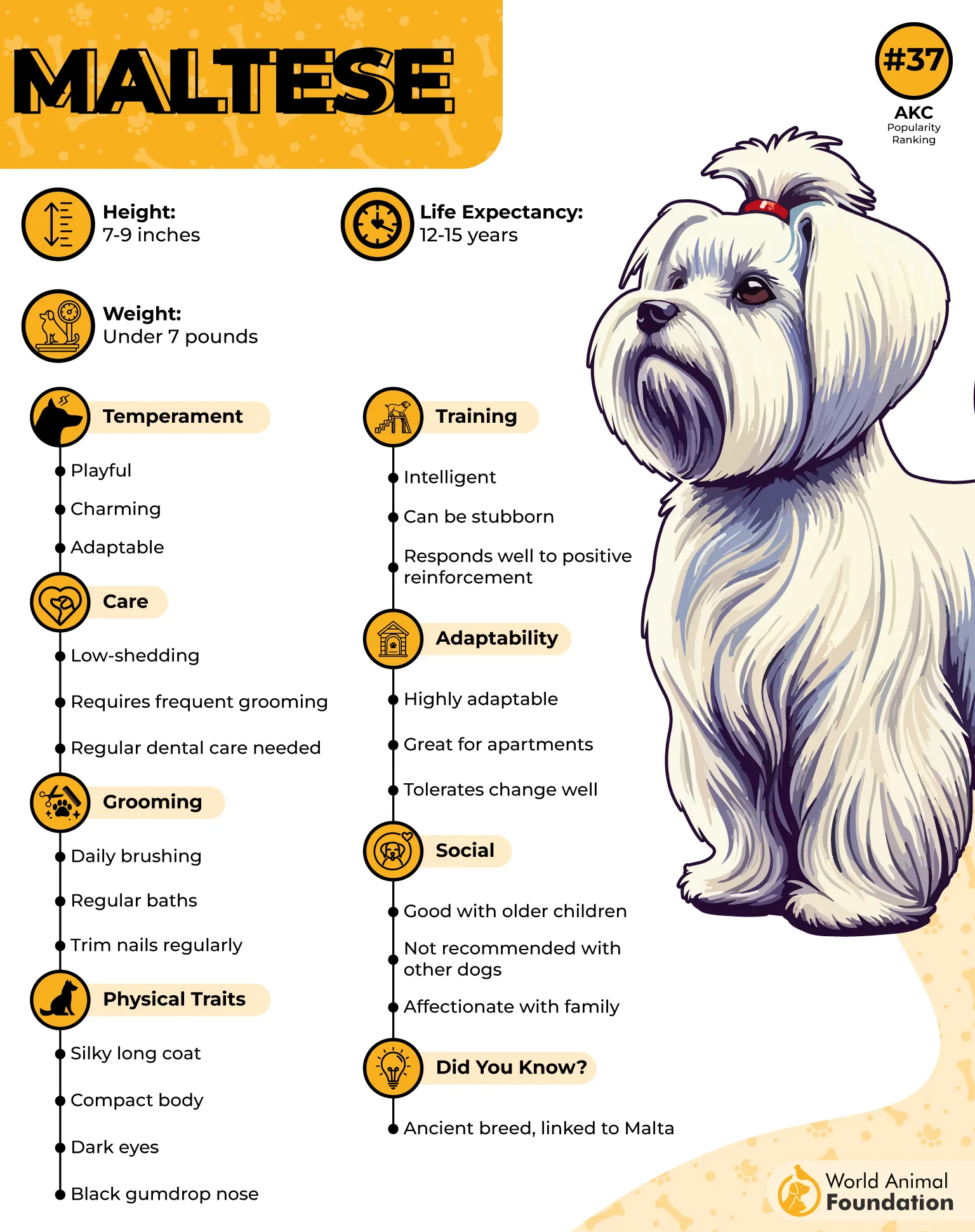
Grooming
These tiny dogs have a long, silky coat that requires daily brushing to prevent tangles and matting. Their drooping ears are heavily feathered, and regular grooming around the face helps highlight their expressive eyes and medium-length muzzle. Routine care keeps them looking elegant while minimizing allergen buildup.
Fun Fact: A Maltese named Trouble famously inherited $2 million from heiress Leona Helmsley, living out her luxurious days with private security in Florida.
3. Chinese Crested
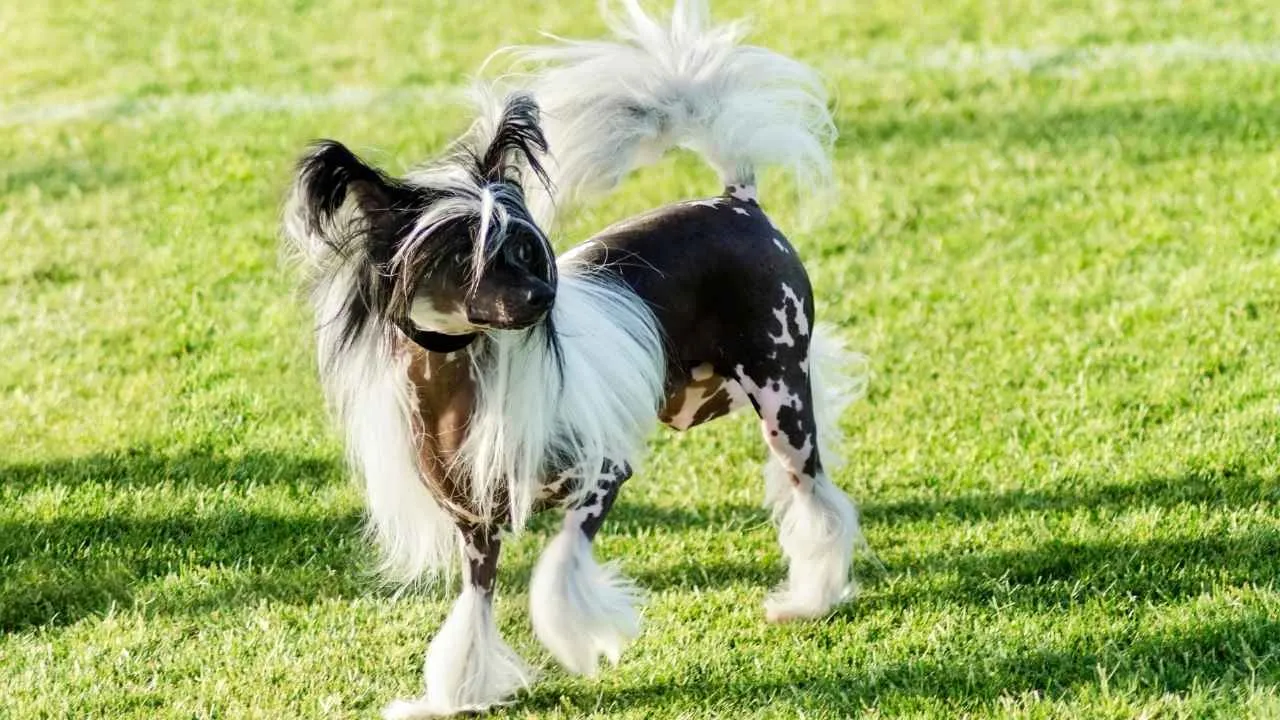
Originating in China, the Chinese Crested is a delicate toy breed celebrated for its distinctive appearance and hypoallergenic qualities. This breed typically weighs between 8 to 12 pounds and stands 11 to 13 inches tall.
Chinese Cresteds come in two varieties: the “hairless,” which features silky tufts of hair on the head, tail, and feet with exposed, smooth skin elsewhere; and the “powderpuff,” a fully coated version with soft, fine fur.
Both types are known for their affectionate nature and spirited energy, making them excellent lap-sized companions. Britannica states that Powderpuff dogs feature a soft, short undercoat topped with longer, silky guard hairs.
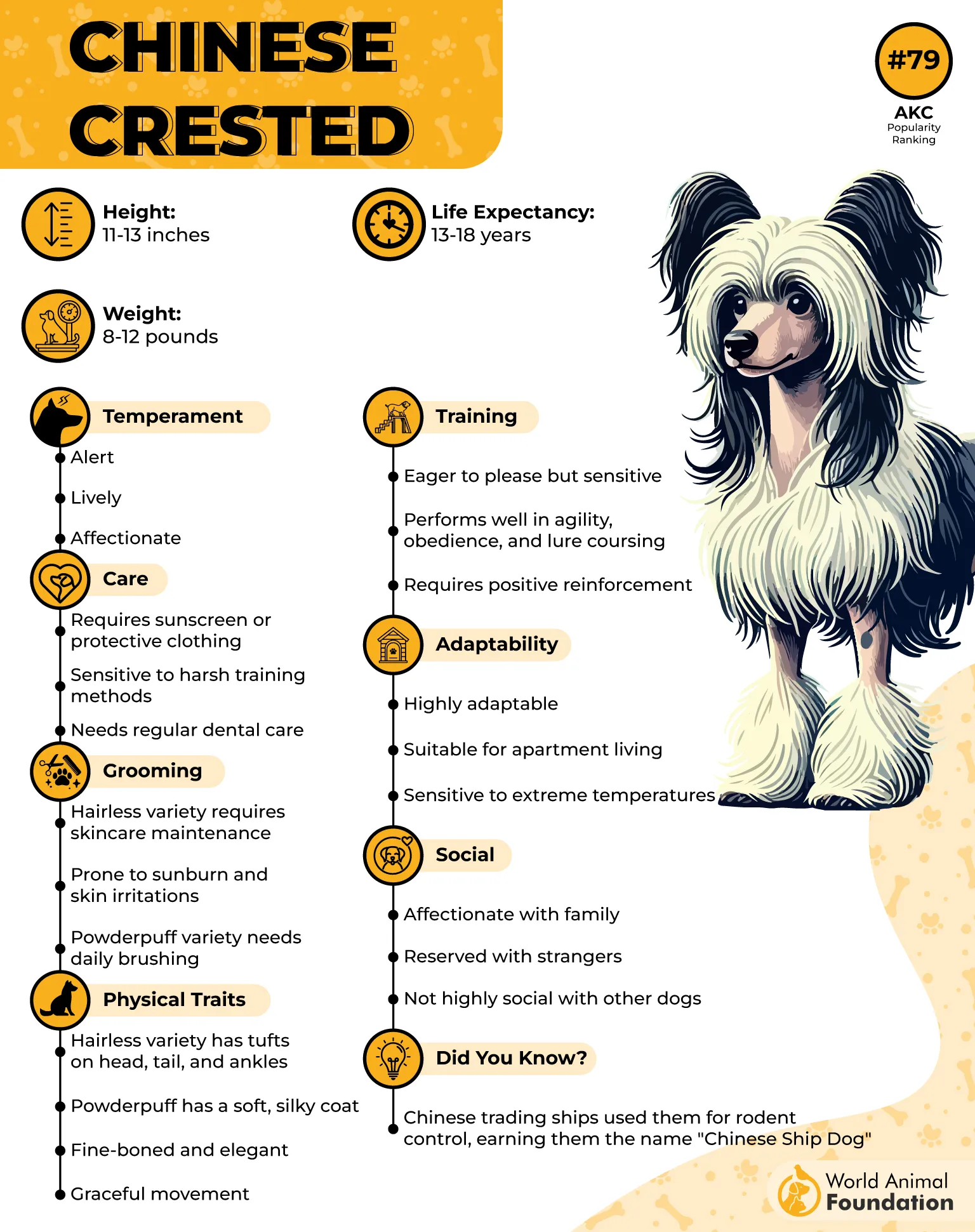
Grooming
Grooming needs vary depending on the coat type. These affectionate dogs require regular skincare, including moisturizing and sun protection, to prevent irritation. Powderpuffs, on the other hand, benefit from frequent brushing to avoid tangles and matting.
Regardless of type, maintaining cleanliness and coat health is key to keeping this breed looking and feeling its best.
Fun Fact: The Chinese Crested’s exposed skin can come in a variety of colors and patterns, often creating a unique, spotted appearance that sets each dog apart.
4. Bichon Frise
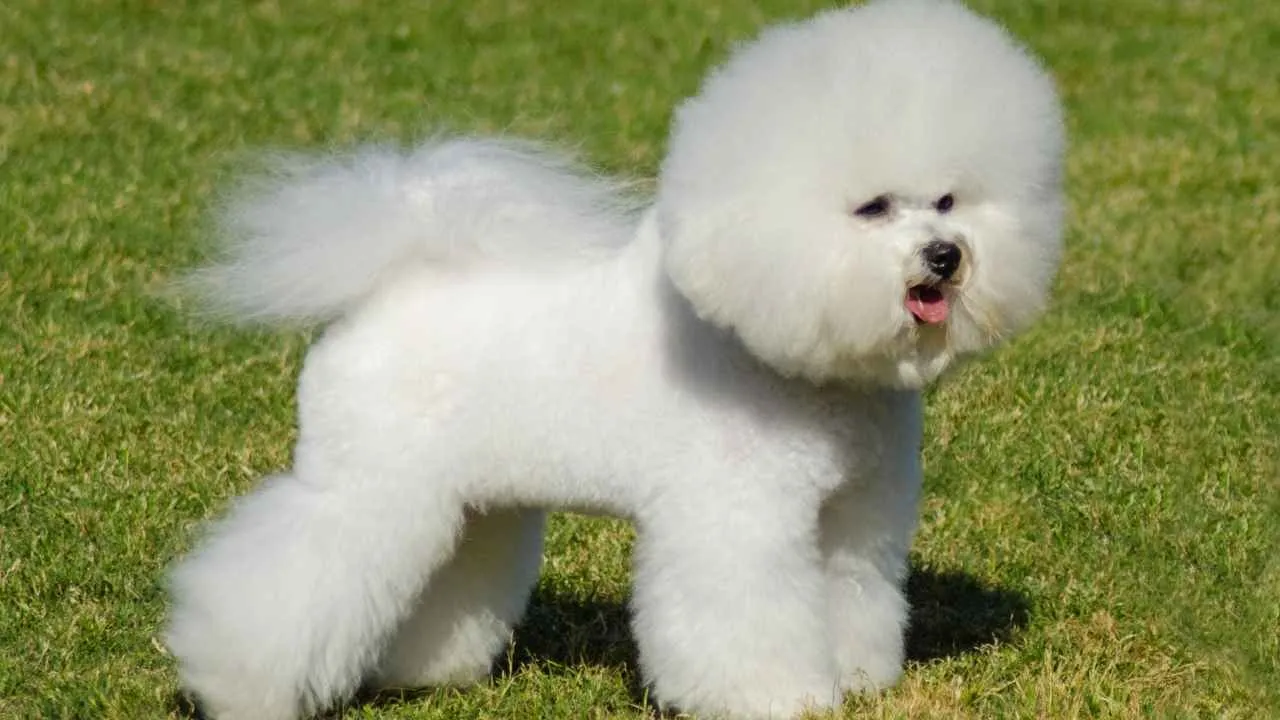
Also known as the Tenerife or simply “Bichon,” the Bichon Frise is a charming little dog that originated in the Mediterranean region and later flourished on the Canary Islands. Spanish and Italian sailors helped introduce this fluffy companion to Europe in the 14th century, where it quickly won the hearts of French and Spanish royalty.
Typically weighing between 12–18 pounds and standing 9.5–11.5 inches tall, the Bichon’s compact size, sociable nature, and low-shedding coat make it an ideal choice for allergy-conscious dog lovers. PDSA reports that Bichon Frises are cheerful and playful by nature, yet equally eager to cuddle and enjoy attention from their pet parents.
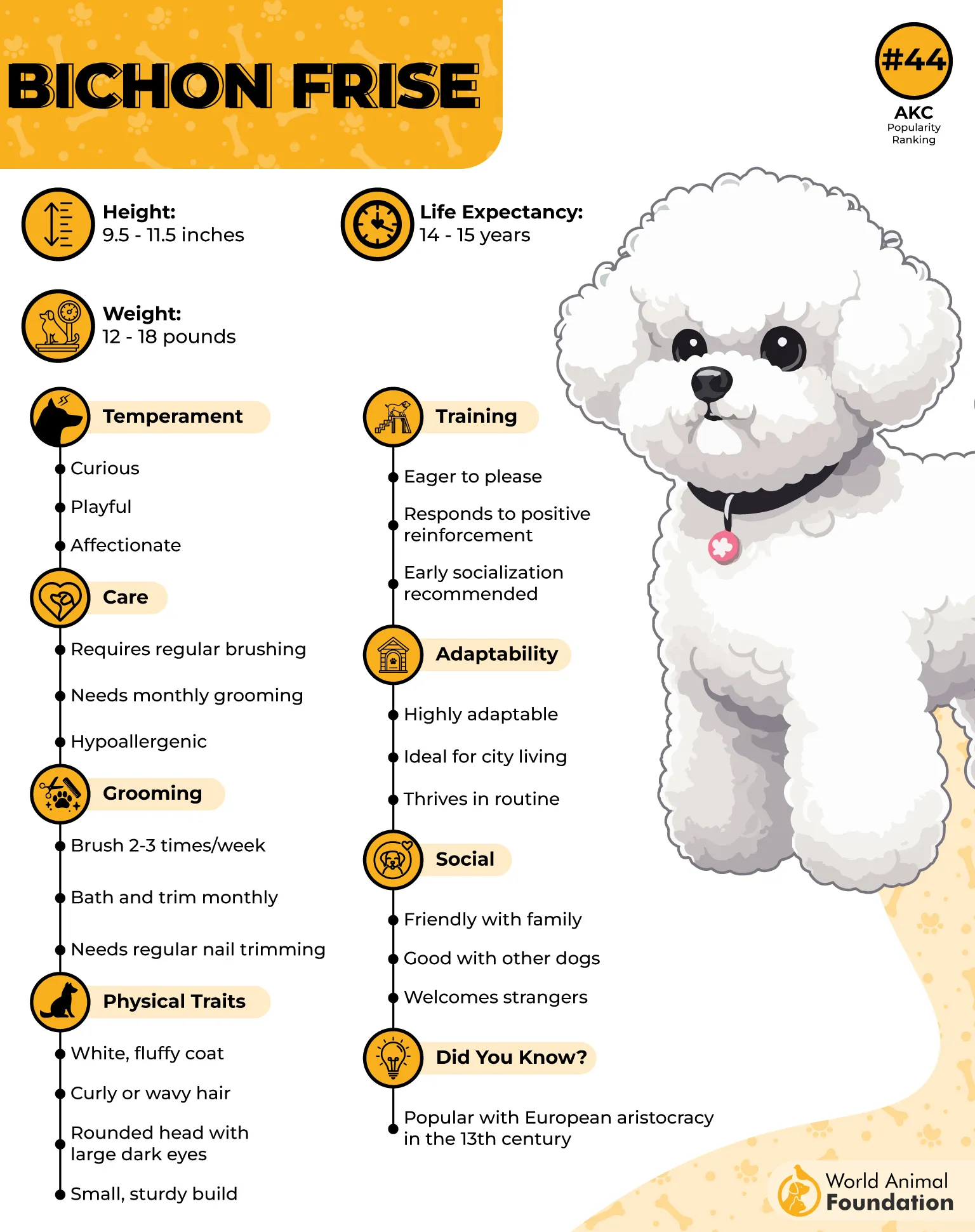
Grooming
The Bichon Frise’s plush white coat is one of its defining features, but it comes with maintenance. Their curly double coat requires frequent brushing, ideally two to three times a week, to prevent mats and tangles.
Regular grooming sessions help manage allergens, making them a practical choice for people with sensitivities. Professional grooming every few weeks is also recommended to maintain their signature rounded look.
Fun Fact: The breed’s name is thought to have inspired the French verb bichonner, meaning “to pamper,” a nod to its regal treatment by European nobility.
5. Miniature Schnauzer
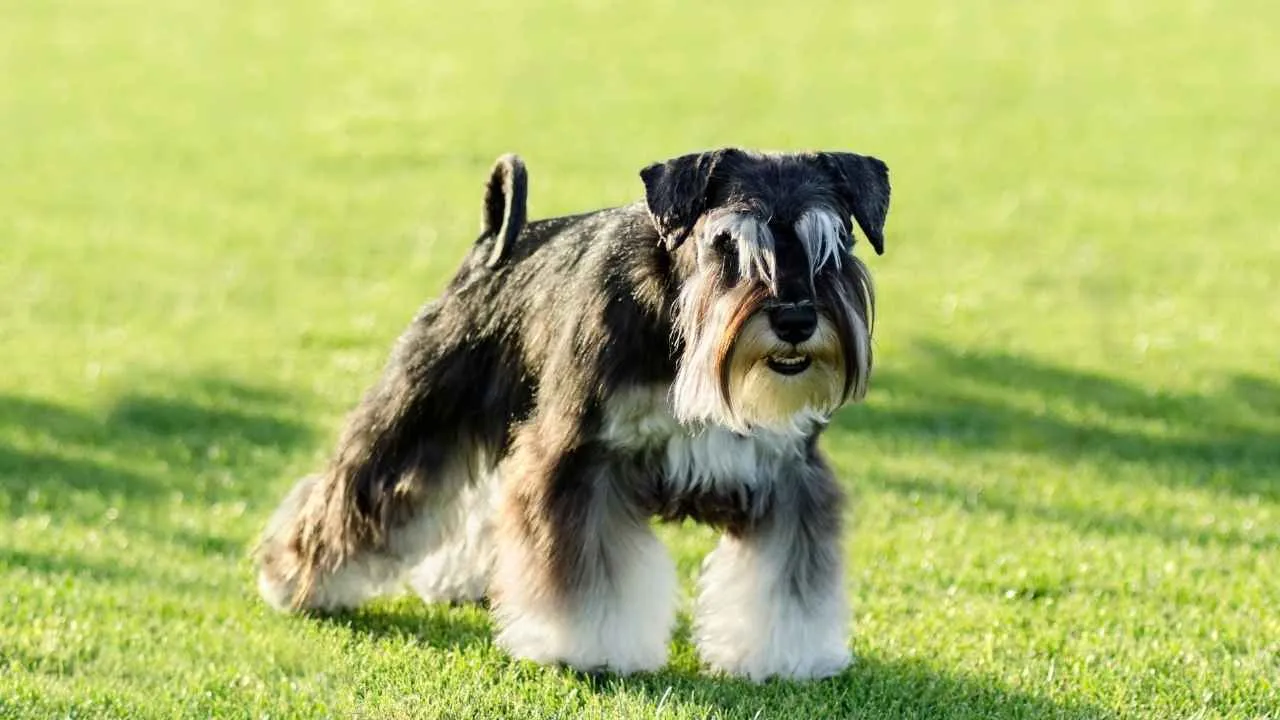
Also known as the Zwergschnauzer, the Miniature Schnauzer originated in 19th-century Germany as a downsized version of the Standard Schnauzer. Originally bred to hunt rats and guard property, this clever and hardy breed has evolved into a spirited and devoted family companion.
Weighing between 11–20 pounds and standing 12–14 inches tall, the Miniature Schnauzer features a distinctive beard, bushy eyebrows, and a wiry double coat that comes in salt and pepper, black and silver, or solid black. Their confident personality, alert expression, and compact size make them well-suited for urban and suburban living alike.
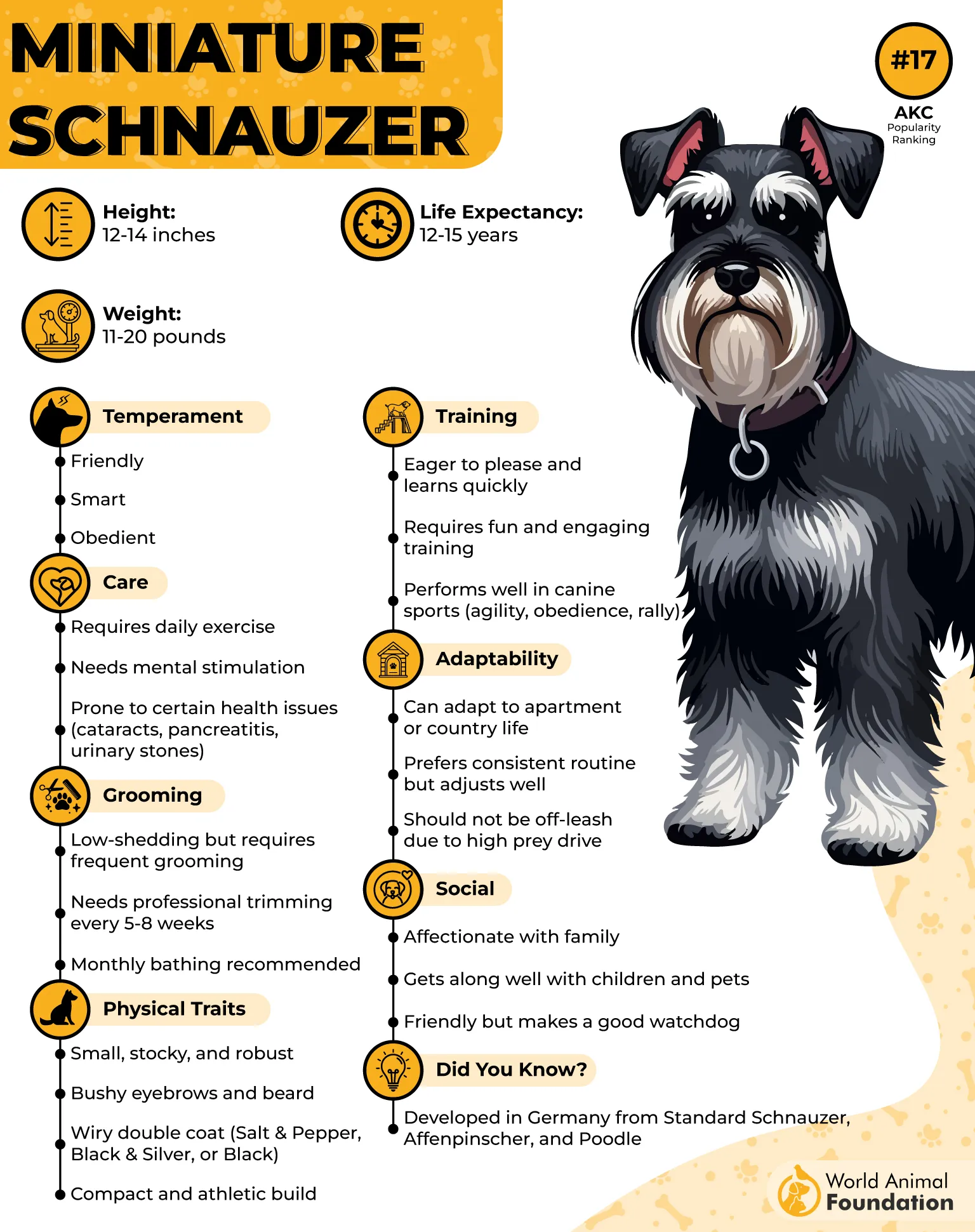
Grooming
Miniature Schnauzers are a hypoallergenic breed thanks to their low-shedding, wiry coat. Regular grooming is essential to maintain their texture and prevent matting. Weekly brushing, combined with professional clipping every 5–8 weeks, helps keep their coat clean and dander low, great news for allergy sufferers.
Fun Fact: The Miniature Schnauzer is the only terrier recognized by the AKC that did not originate from the British Isles.
6. Affenpinscher
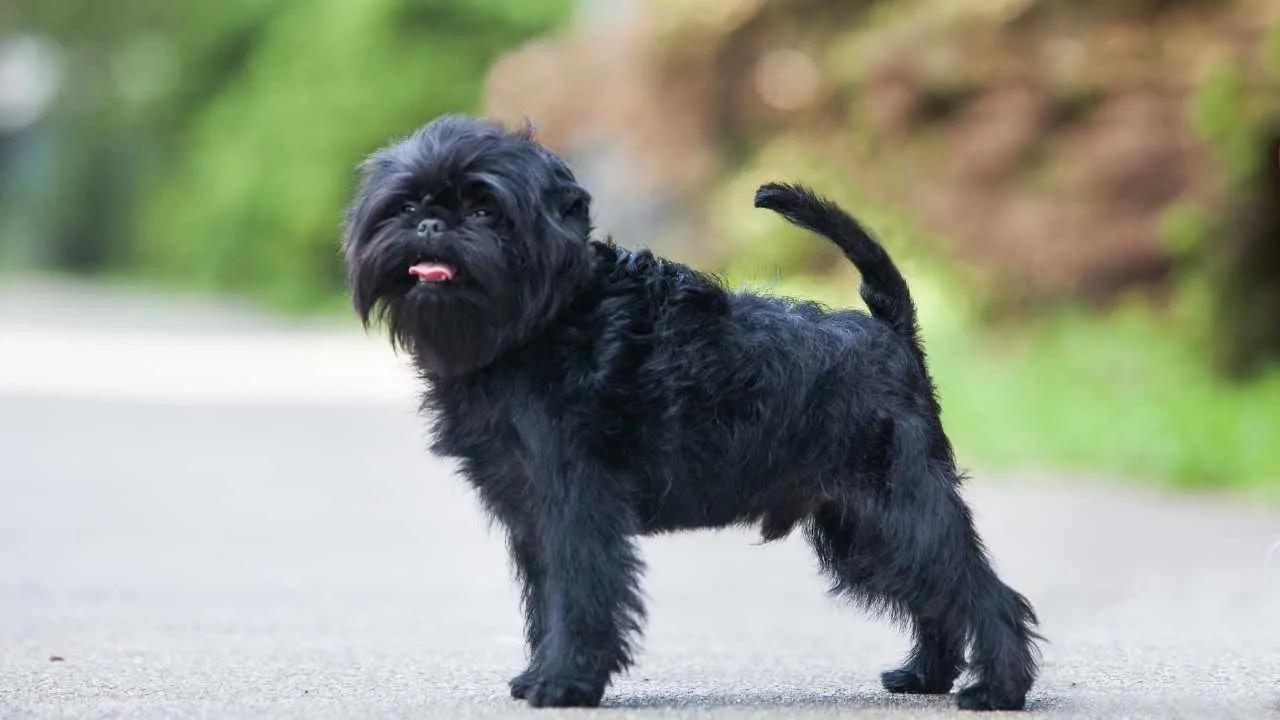
Known affectionately as the “monkey dog,” the Affenpinscher is a charming toy breed with origins in 17th-century Germany, where it was developed to hunt vermin. Small but spirited, these dogs typically stand 9–12 inches tall and weigh between 7–10 pounds.
They’re prized for their scruffy, wiry coats that come in shades like black, silver, red, and gray, and their dark, round eyes and short muzzles give them a uniquely expressive face.
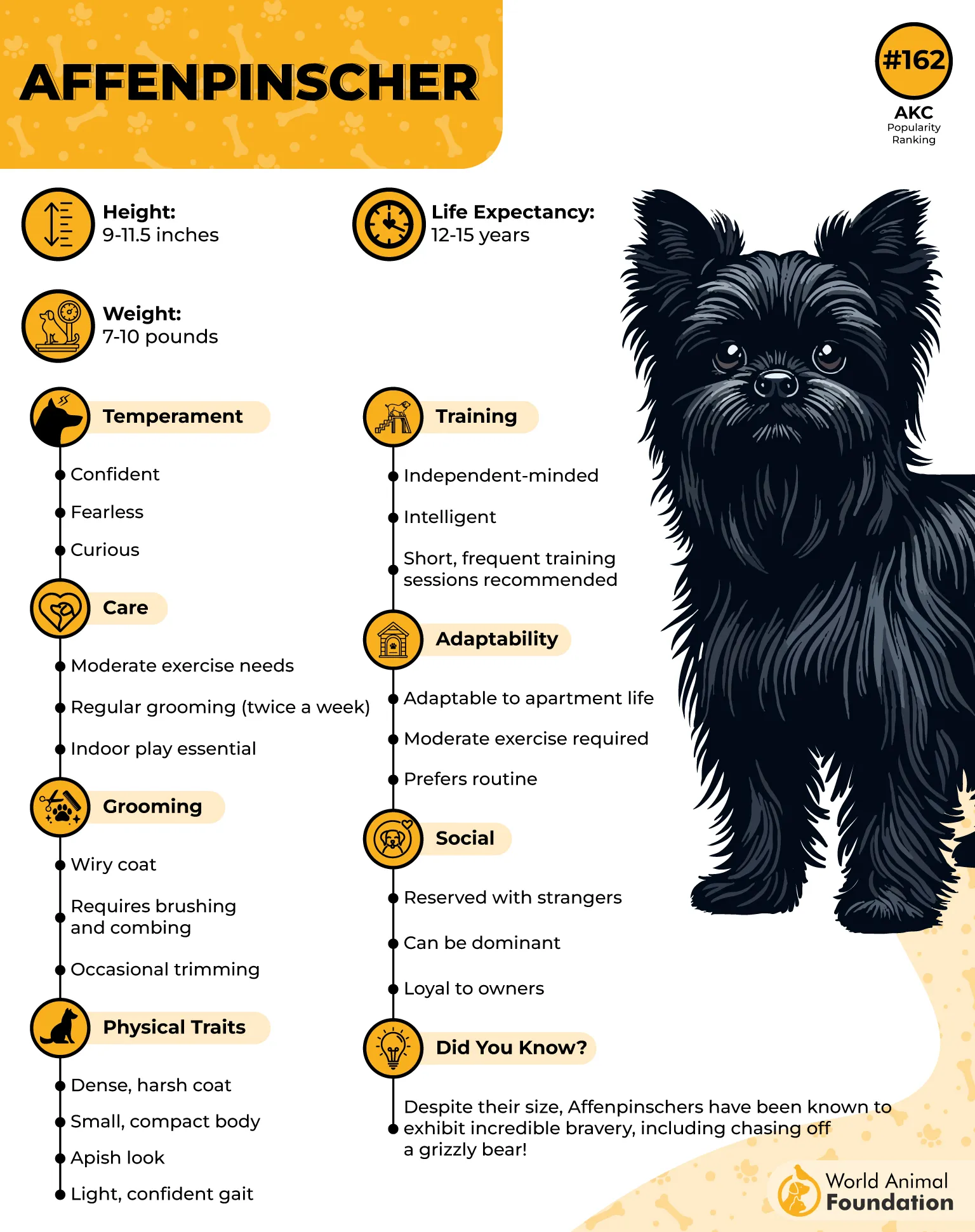
Grooming
The Affenpinscher’s rough, dense coat sheds minimally, making it a great choice for allergy-sensitive households. Regular grooming is essential to maintain its texture and prevent matting, especially around the legs and facial hair where it tends to grow longer.
Brushing a few times per week and occasional trimming by a professional groomer helps keep the coat tidy and allergen levels lower, while also reducing loose hair in the home.
Fun Fact: Despite their toy size, Affenpinschers were originally fearless rat catchers and are one of the oldest toy breeds developed for utility rather than solely companionship.
7. Yorkshire Terrier
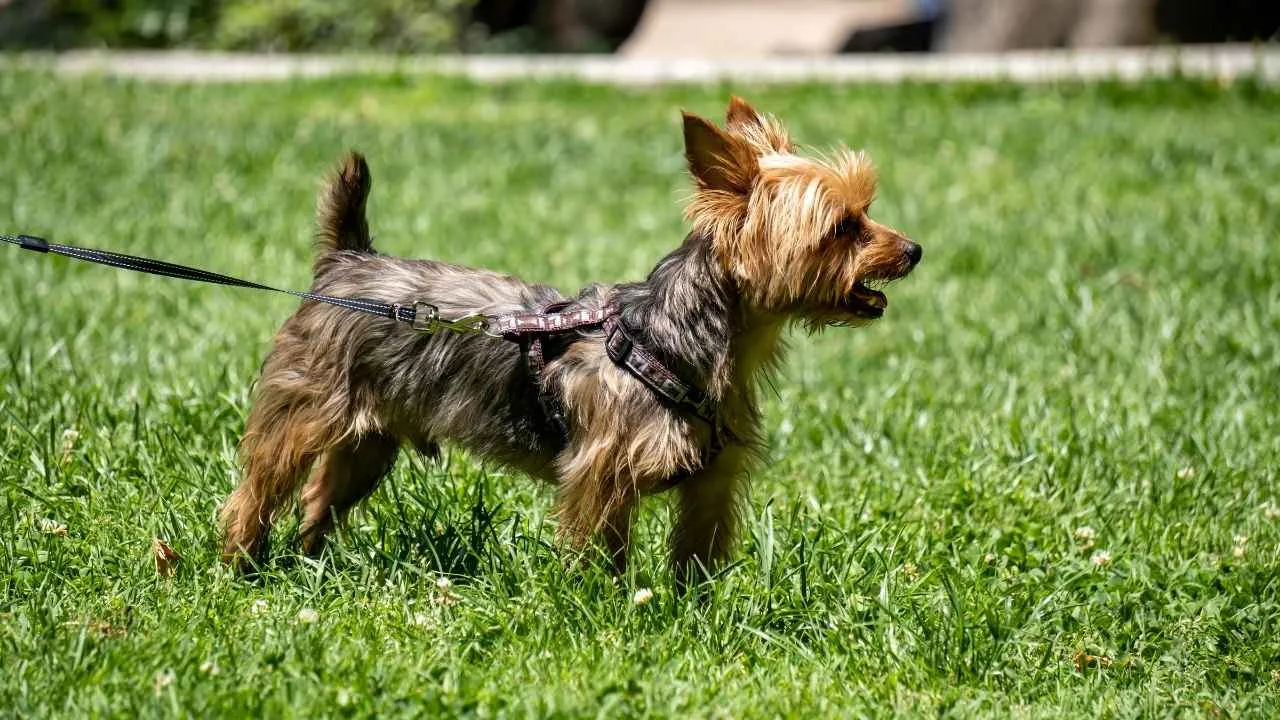
Commonly referred to as the “Yorkie,” this hypoallergenic dog breed is a bold and spirited breed that originated in the mid-1800s in Yorkshire and Lancashire, England. Bred from a mix of terriers brought by Scottish weavers, their lineage may include the Skye, Dandie Dinmont, and possibly the Maltese.
These toy-sized dogs stand around 7–8 inches tall and weigh no more than 7 pounds. Despite their dainty size, they have a fierce terrier temperament and were once prized as rat hunters in textile mills before becoming beloved companions to Victorian elites.
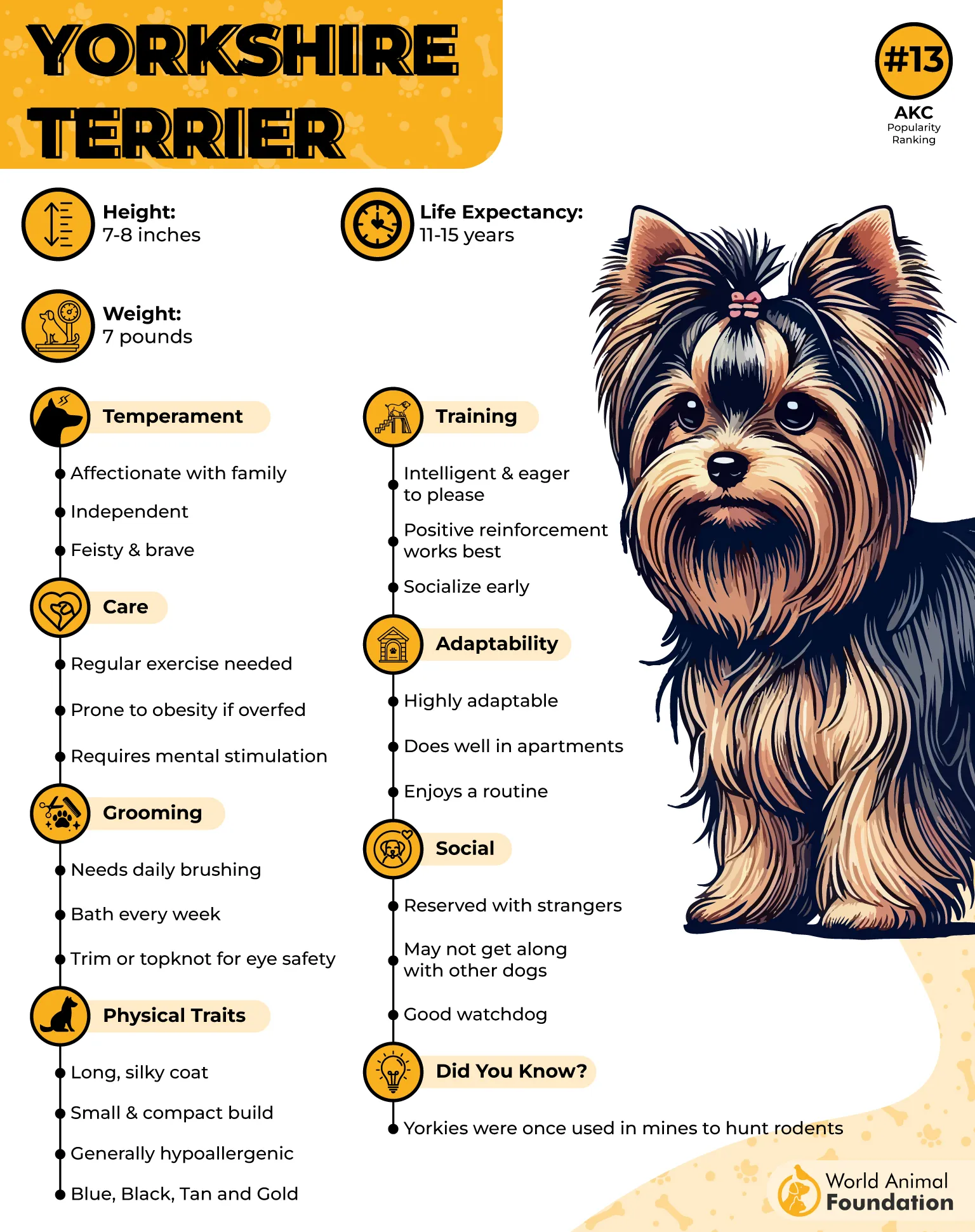
Grooming
The Yorkie’s standout feature is its silky, floor-length coat, often compared to human hair due to its texture and minimal shedding qualities that contribute to its hypoallergenic reputation.
Daily brushing is essential to prevent matting and maintain their luxurious locks. Regular grooming appointments help keep their signature steel-blue and golden-tan coat in top shape.
Fun Fact: A heroic Yorkie named Smoky served in World War II, surviving combat missions and aiding soldiers by dragging communication cables through tight spaces, earning eight battle stars.
Conclusion
For allergy-sensitive dog lovers, hypoallergenic teacup breeds offer the perfect blend of cuteness and comfort. While no dog is completely allergen-free, certain dog breeds like teacup Yorkies and teacup Maltese are specially prized for their minimal shedding and hair-like coats. These pint-sized companions not only reduce allergic reactions but also bring a lifetime of charm, intelligence, and affection in the tiniest packages.
From teacup Shih Tzus with their luxurious coats to the lively teacup Chihuahua, many of the best teacup dog breeds are recognized by the American Kennel Club or trace their lineage to well-established standard breeds. Whether you’re drawn to their glamorous appearance or their surprisingly bold personalities, these hypoallergenic pups prove that even the smallest dogs can have a big impact. Choosing a breed that suits both your lifestyle and sensitivity level can make all the difference in building a harmonious home with your miniature best friend.


